
Ticket window
Surveillance and security
Conferencing
Boundary Layer Microphones
• Hemispherical polar pattern, excellent intelligibility
• Low frequency roll off to reduce HVAC rumble
• Inconspicuous, resembles a light switch
• Mounts a standard wall plate
• Screw terminal, no need for connectors
PZM-11
The PZM®-11 is a pressure Zone Microphone® designed for conference-room, security and surveillance applications. It can be mounted in the
ceiling or wall in a standard electrical outlet box. Providing excellent intelligibility, the PZM®-11 is designed to look like a light switch so as not to draw
attention.
The PZM®-11 has a mic-level output and is powered by 12-48 V phantom power. Like other Pressure Zone Microphones®, the PZM® -11 utilize the
Pressure Recording Process™ in which a miniature condenser microphone capsule is mounted very close to a sound reflecting plate or boundary.
The capsule is mounted in the “Pressure Zone” just above the boundary, a region where sound coming directly from the sound source combines in-
phase with sound reflected off the boundary. The benefits are a wide, smooth frequency response free of phase interference, excellent clarity and
“reach,” and consistent pickup anywhere around the microphone.
In the PZM®-11 low frequencies below the voice range are rolled off to reduce pickup of heating, ventilation or air-conditioning rumble (HVAC
rumble). The high-frequency response is boosted slightly to aid clarity and articulation.
The microphone connector is a row of screw terminals for easy installation. The output is balanced, low impedance, which allows long cable runs
without hum pickup or high-frequency loss.
.

Specifications:
Polar pattern: hemispherical
Frequency response: 80 to 20,000 Hz
Impedance: 225 ohms
Equivalent noise level: 26 dB-A
Maximum SPL: 120 dB
Finish: off-white; May be painted any color
Net weight: 71 g (2.5 oz.)
Item number: PCC-11 6000H50050
Boundary Layer Microphones
Installation
1. Please locate all the parts shown below.
2. Run a 2-conductor shielded mic cable to the hole where you intend to install the
microphone. Install a standard electrical outlet box in the hole. To use phantom power, you
need a mixer with phantom power or an external phantom-power supply.
3. Run the mic cable through the hole in the electrical box (if any) and through either hole in
the chassis
Service the end of the mic cable.
4. Attach your mic-cable leads to the screw terminals labelled OUTPUT. Connect the mic-
cable shield to 1, audio + lead to 2, and audio – lead to 3.
5. Place the chassis over the two long screws. Using the nuts provided, secure the chassis to
the faceplate.
6. Using the two screws provided, secure the faceplate to the electrical box or wall board.
7. If you plan to use an XLR-type cable connector: Solder the cable shield to pin 1, audio +
lead to pin 2 and audio – lead to pin 3 of the XLR. If you plan to use an RCA or phone
connector: Solder the cable shield to the long lug, and solder the audio + lead to the tip or pin.
Do not connect the audio – lead because this may reduce the output level in an unbalanced
configuration.
8. If the mic cable is run in metal conduit, ground loops can occur that can cause hum. If hum
is present after installation, unsolder the chip resistor labelled 000 on the printed-circuit board
9. If you plan to use a cable connector, solder the other end of the mic cable to a 3-pin
professional audio connector (XLR-type). Solder the cable shield to pin 1, light-colored lead to
pin 2, and darker lead to pin 3.
Architects’ and Engineers’ Specifications
The microphone shall be the Model PZM
® -11 or equivalent.
The microphone shall be a Pressure Zone Microphone
®, electret-condenser type, with built-in
electronics interface. The microphone capsule holder shall be mounted on a standard switch
plate. The microphone shall be powered from 12-48 V phantom power.
The output shall be low impedance balanced. Frequency response shall be from 80 Hz to 20,000
Hz. Low frequencies below the voice range shall be rolled off. Open-circuit sensitivity shall be
5 mV/Pa (–46 dB re 1V/Pa). Maximum SPL capability shall be 120 dB SPL at 3% THD.
Equivalent noise shall be 26 dBA typical (0 dB = 0,0002 dyne/cm2).
The PZM
® -11 microphone is specified.
-
 1
1
-
 2
2
AKG PZM11 Quick start guide
- Category
- Microphones
- Type
- Quick start guide
Ask a question and I''ll find the answer in the document
Finding information in a document is now easier with AI
Related papers
Other documents
-
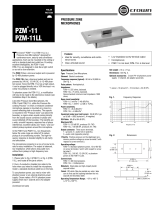 Crown Audio PZM-11 User manual
Crown Audio PZM-11 User manual
-
Crown Microphone PZM-11 User manual
-
 Crown Audio PZM-10LL User manual
Crown Audio PZM-10LL User manual
-
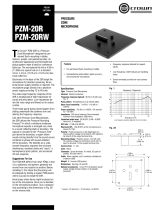 Crown Audio PZM-20R User manual
Crown Audio PZM-20R User manual
-
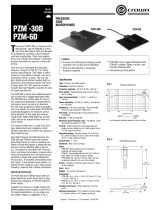 Crown Audio PZM-6D User manual
Crown Audio PZM-6D User manual
-
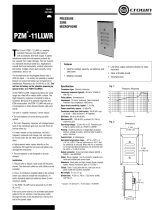 Crown Audio PZM-11LLWR User manual
Crown Audio PZM-11LLWR User manual
-
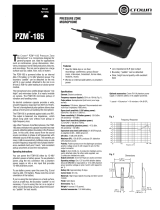 Crown Audio PZM-185 User manual
Crown Audio PZM-185 User manual
-
 Crown Audio SASS User manual
Crown Audio SASS User manual
-
Crown LM-300AL Application Manual
-
Crown PZM-6D User manual








